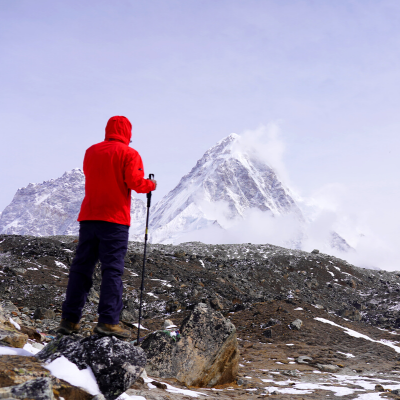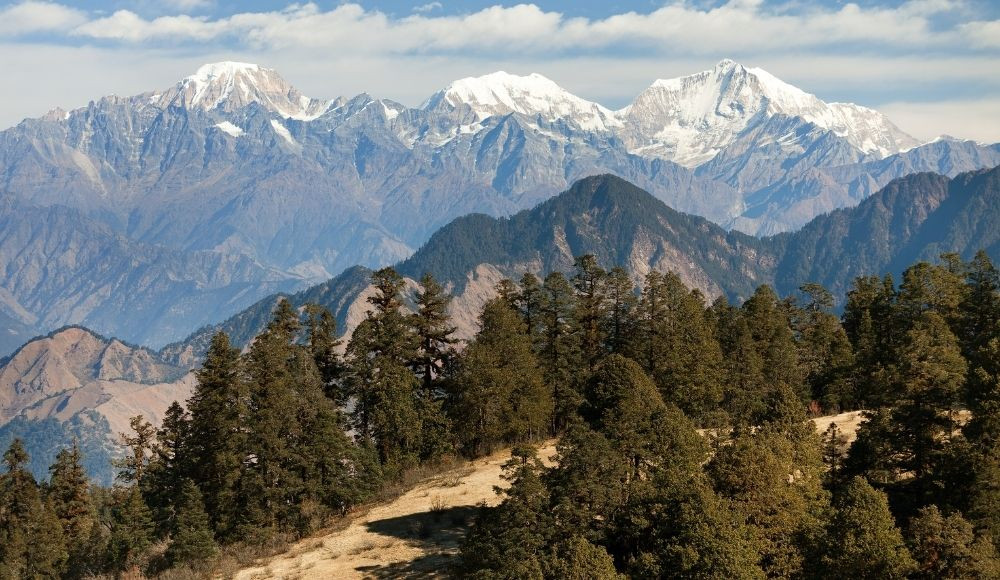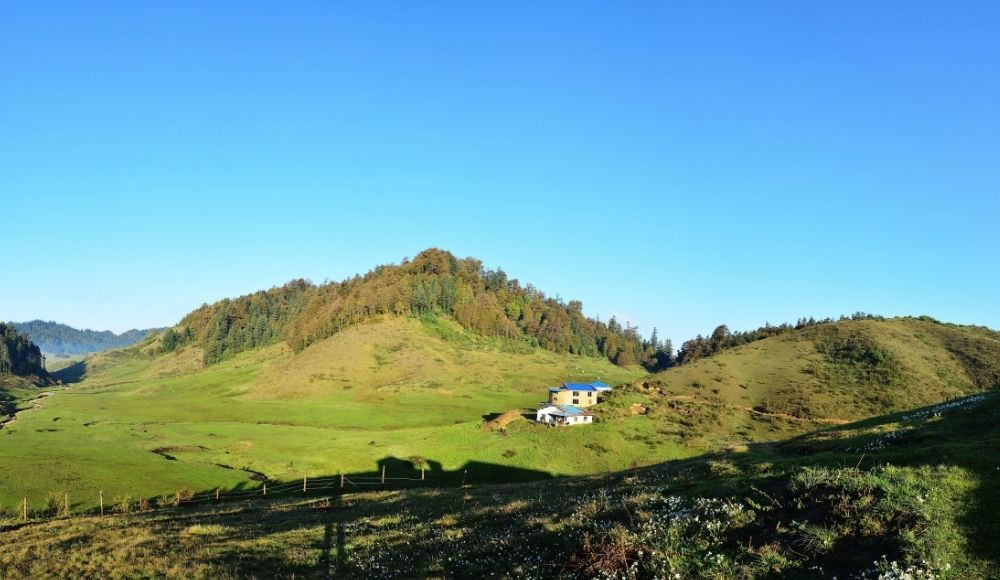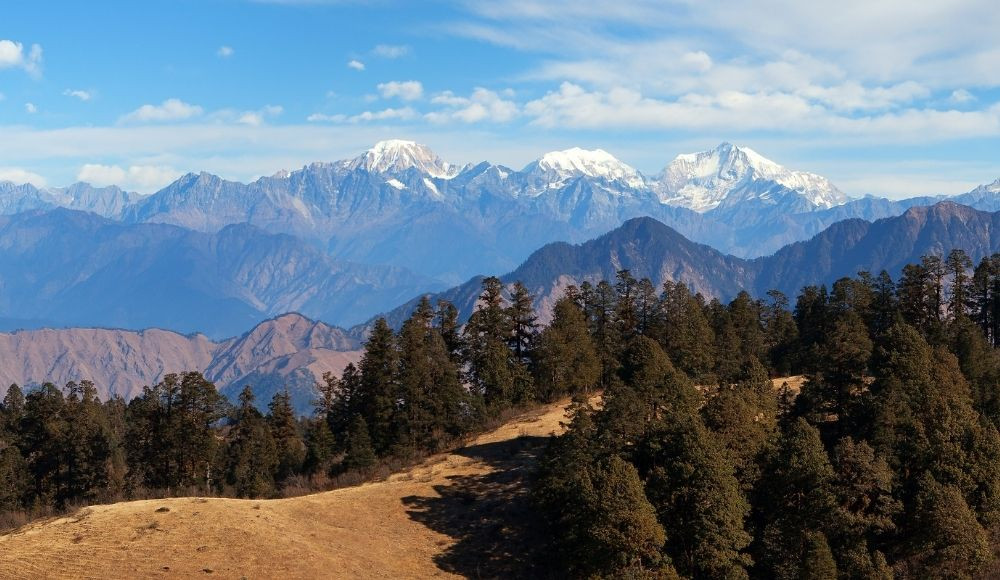Khaptad National Park
People from all around the region come to celebrate, wearing their traditional attire, showcasing their diverse culture.
People from all around the region come to celebrate, wearing their traditional attire, showcasing their diverse culture.


Khaptad national park is a protected area that lies in the far-western region of Nepal. It was established in 1984. Over four destinations of Bajhung, Bajura, Achham, and Doti it covers an area of 225 square km and ranges in elevation from 1,400 m. to 3,300 m.
Khaptad a wonderful and naturally beautiful destination accompanied by rich spiritual history. Khaptad Baba, the renowned spiritual saint after which this region takes its name, is said to have meditated here for 50 years.
Also, manage your visit on the time of the full moon in July and August when Hindu pilgrims come to worship Lord Shiva in the Khaptad Baba Ashram. However, every season is suitable to visit Khaptad National Park because of its amazing landscapes and diverse floral and faunal spectrums.
|
Area (Sq. KM) |
225 |
|
Established |
1984 |
|
Location |
Bajura, Bajhang, Achham, Doti(Province no.7, Nepal) |
|
Highest elevation (above sea level) |
3,300m (10,800 ft) |
|
Lowest elevation (above sea level) |
1,400m (4,600 ft) |
|
Flora |
567 species |
|
Fauna |
23 mammals, 287 birds, and 23 amphibians and reptiles. |
|
Major ethnicity |
Brahmin, Chhetri, Magar, Newar, etc. |
|
Language spoken |
Doteli, Nepali, Hindi, etc. |
|
Major activities |
Trekking, bird watching, meditation, pilgrimage(trip), etc. |
It was established in 1984 by the Holy Man Khatpad Baba. Renowned Khaptad Baba Ashram, a religious site where Hindu pilgrims come to worship Shiva, is located near the park headquarter.

Further, Khaptad Baba moved to the area in the 1940s to meditate and worship. He spent about 50 years as a hermit and became a renowned spiritual saint. Moreover, The rich spiritual history and amazing floral and faunal beauty of this region attract a lot of people every year.
Khatpad Baba known as Swami Sachchidananda was a spiritual saint who travelled along the high mountains region of Nepal and settled temporarily in Ilam. Kalinchowk, Swargadwari, Mushikot, Chandannath and ultimately in the Khaptad Valley in the 1940s to meditate and worship.
He lived for more than fifty years in the valley and overlooked the establishment of Khaptad national park in 1984. He is revered as a Hindu saint. Within the national park, a hermitage, temples, and stone statues remain, and it also contains Khaptad lake.
Khaptad Baba Ashram lies inside Khaptad National park. Khatpad Baba in Triveni located inside. The National Park was known as a philosopher, physician, scientist, and astrologer. The meditation area includes temples of lower Triveni. No restrictions for visitors. In the core zone. However, grazing animals, cutting firewood and activities like alcohol activities and slaughtering are prohibited.
The Dasara festival is held in mid April in Khaptad. People from all around the region come to celebrate, wearing their traditional attire, showcasing their diverse culture. Deuda (special culture of the far western), chutkila and mangal also reflect the region’s unique culture.
The Marsi rice also comes from this region. Meltadi and Daru villages in Channa Rural Municipality are famous for their organic Marsi rice which can be served alongside nettle, Chakaya, Jarko (lentils), organic potato, Choto (a special kind of radish-like vegetable found in the Himalayas), Buckwheat, Bethe (local spinach) and Bhang (grass seed) chutney.

The yoghurt from Khaptad is known for its different flavour. Local farmers claim that it has stimulating qualities. They connect this to the cattle grazing on herbs with hallucinogenic properties. Khaptad’s buttermilk and ghee are also popular. The different menus of the Sudurpaschim region add mana (paddy), Batuk, chukani and gharya bread that is accepted in local hotels in and around Khaptad.
Saileswari is the most famous religious stop on the way to Khaptad from Attariya chowk, Kailai. The temples of goddess Saileswori in Silgadhi, Doti are temples dedicated to Ganesh and Masto. Silagardhi Buzzer, which is a historical town, is the main business centre in the far western region of Nepal.
Ramaroshan of Achham district is also called Pan Cha Pura (5 cities) in Hindu scriptures and is attached to the stories of the Puranic Age. It is famous for five historical cities connected to stories of goddess Parvati. There are 12 lakes in Khaptad national parks that are good for bird watching sites and also ruins of the old historical building that makes this region important from an archaeological point of view.
The views of the Himalayas and the ideal time to visit are from April to October. The area from Khaptad National Park for eight to ten days through remarkable landscapes of verdant forests and pastures. Badimalika houses the temple's old Mallika Devi in the Bajura district. The goodness Sati, Shiva’s consort was reborn as Parvati in the holy sites.
Surma Sarovar is a beautiful lake in the district of Bajura and is considered holy by Hindus. A temple dedicated to Surna Devi is situated near the lake. The lake can be reached after a 3 days trek from Khaptad National Park. Surma Sarovar is an eloquent lake and has a religious temple of Goddess Kali. Mt. Kailash views are also spectacular from Surma Sarovar.
The landscape consists of moorland, steep slopes, and streams 567 species of flora have been recorded in a protected area. The vegetation types include chir phine-rhododendron forest, oak forest, and Himalayan fir-hemlock oak forest and alder forest in riverine areas.
23 mammals, 287 birds, 23 amphibians and reptiles, Mammals symbolic of the park are leopards, Himalayan black bears, wild dogs, and musk deers. Bird species of the park include the impeyan pheasants, peregrines, falcons and white-rumped vultures.
There are several activities that can be done in this natural paradise. Khaptad national park is the least explored, carrying the immense potential in the far-western hills, this region offers the best experiences so far. The pristine cultural values of this region are equally popular.
It is a remote area of Nepal. Due to the remote area, many tourists still couldn’t go there. It is one of the best places for trekkers in the far western development region for the people who wanna explore new places and get away from the urbanization area for a few days. If you want to go trekking to this place then you need to take all required things for your lodging and fooding along with guides and porters.
Khatpad has a huge religious value. In 1940 a saint, popular as Khaptad Baba, came and started living and discovered many medicinal herbs too. This place is so quiet that we can only hear our own breath while going for mediation. Thus this park and especially the ashram is popular for Yoga and meditation.
The Khatpad park boasts a variety of birds. The traveller just travels to Khaptad to see the birds. We can find various birds in Khaptad National Park. There are so many different birds like partridges, flycatchers, bulbuls, cuckoos, and eagles. Similarly, the other things are seeing the grassland and meadow is also the reason for travelling to this area.
The flight from Kathmandu will take you to Dhangadhi and the drive from Dhangadhi will take you to Khaptad National Park. It takes 7-8 hours to drive from Dhangadhi to reach Khaptad. Also, you may complete your journey entirely by drive.
From Kathmandu to Dhangadhi, the drive is accessible as well. However, it will be tiresome. So, we better suggest you get a flight to Dhangadhi from Kathmandu.
Spring(March-may) and autumn(October-November) are the best time to visit Khaptad national park. These months are also popular as a pleasant month to visit Khaptad.
From December to February the winter kicks in and temperatures drop. The national park will be covered with snow and trails are not accessible. Between June and September, the monsoon strikes bringing lots of rain throughout the days.
The temperatures range from 10 degrees to 20 degrees pleasant trekking weather. Monsoon begins in June and lasts until September during this time paths become muddy and slippery. Due to February winter brings snow and chilling winds.
Entry fees for Nepalese are NPR 100 per person, for SAARC countries it is NPR 1000 per person. And for foreigners other than SAARC countries is NPR 2000 per person and for the child below 10, no entry fees are applicable.
|
Entry Fees in Khaptad National Park |
||
|
Nepali Visitors |
SAARC Visitors |
Foreign Visitors |
|
NPR 100 |
NPR 1000 |
NPR 2000 |
|
Documentary or Film Making Fees |
||
|
Nepali Citizen |
SAARC Citizen |
Foreign Citizen |
|
NPR 10000 |
NPR 50000 |
USD 1500 |
Camping fees fo Nepalese is NPR 100 per person, per night. SAARC countries' passport holders or citizens have to pay NPR 1000 per person, per night. For foreigners other than SAARC countries is NPR 2,000 per person per night. The number of tented camps depends on the travellers. No extra fee is added per camp.
With such a beautiful landscape, different places to explore inside the park and varieties of flora and fauna Khaptad is also a perfect destination for Documentary or Film Making. Film Making fees for Nepalese are NPR 10,000, for SAARC countries is NPR 50,000. And for foreigners other than SAARC countries it is USD 1,500.
The facilities are very limited, the park entry and the park headquarters there are several small and very basic lodges. You can also join for breakfast, lunch and dinner. If you want any extra food, drinks, etc. you will have to take these from Silghadi. Do not forget to get a fresh first-aid kid with you as medical means are close to none.